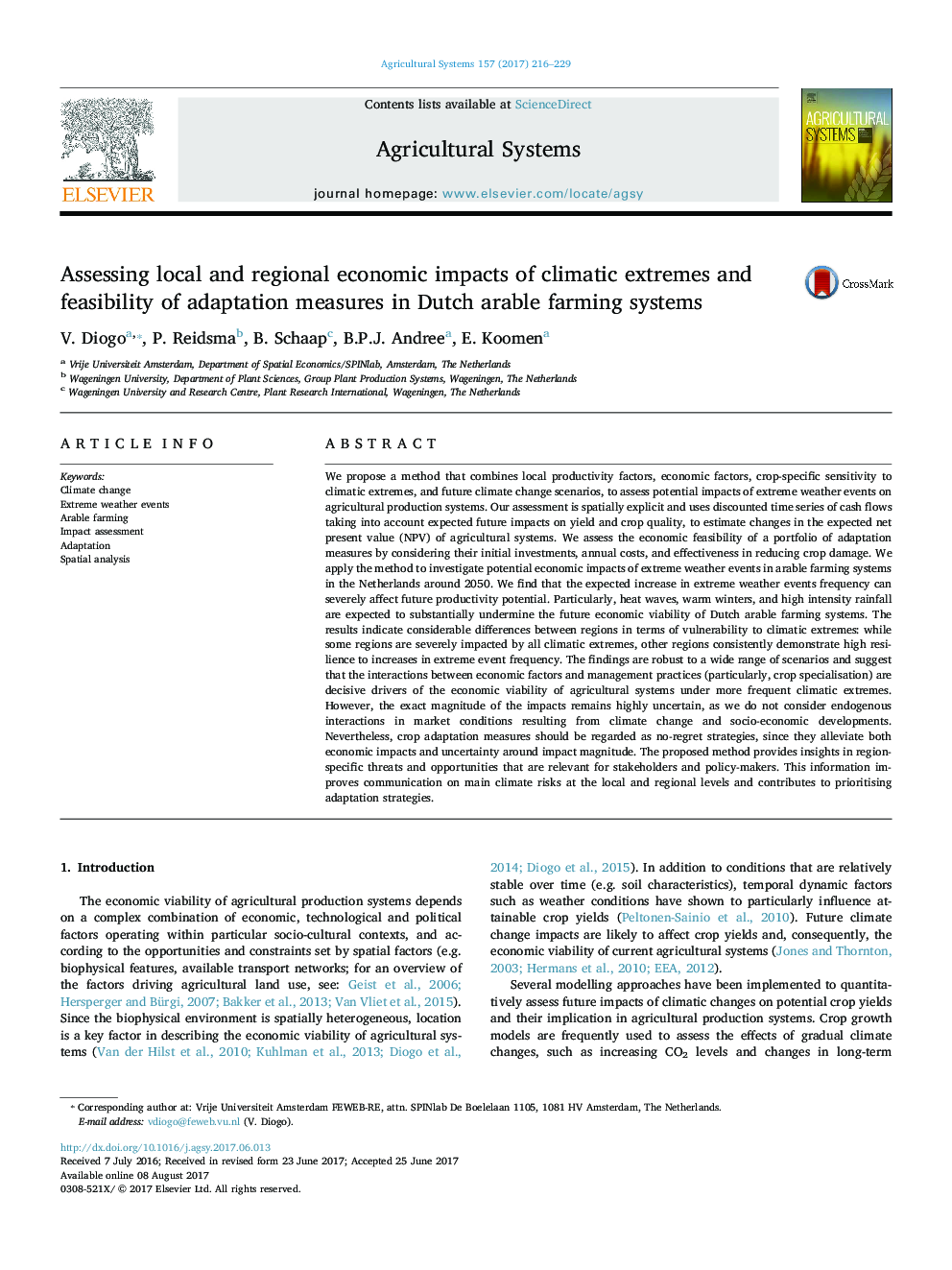| Article ID | Journal | Published Year | Pages | File Type |
|---|---|---|---|---|
| 5759629 | Agricultural Systems | 2017 | 14 Pages |
Abstract
We propose a method that combines local productivity factors, economic factors, crop-specific sensitivity to climatic extremes, and future climate change scenarios, to assess potential impacts of extreme weather events on agricultural production systems. Our assessment is spatially explicit and uses discounted time series of cash flows taking into account expected future impacts on yield and crop quality, to estimate changes in the expected net present value (NPV) of agricultural systems. We assess the economic feasibility of a portfolio of adaptation measures by considering their initial investments, annual costs, and effectiveness in reducing crop damage. We apply the method to investigate potential economic impacts of extreme weather events in arable farming systems in the Netherlands around 2050. We find that the expected increase in extreme weather events frequency can severely affect future productivity potential. Particularly, heat waves, warm winters, and high intensity rainfall are expected to substantially undermine the future economic viability of Dutch arable farming systems. The results indicate considerable differences between regions in terms of vulnerability to climatic extremes: while some regions are severely impacted by all climatic extremes, other regions consistently demonstrate high resilience to increases in extreme event frequency. The findings are robust to a wide range of scenarios and suggest that the interactions between economic factors and management practices (particularly, crop specialisation) are decisive drivers of the economic viability of agricultural systems under more frequent climatic extremes. However, the exact magnitude of the impacts remains highly uncertain, as we do not consider endogenous interactions in market conditions resulting from climate change and socio-economic developments. Nevertheless, crop adaptation measures should be regarded as no-regret strategies, since they alleviate both economic impacts and uncertainty around impact magnitude. The proposed method provides insights in region-specific threats and opportunities that are relevant for stakeholders and policy-makers. This information improves communication on main climate risks at the local and regional levels and contributes to prioritising adaptation strategies.
Keywords
Related Topics
Life Sciences
Agricultural and Biological Sciences
Agricultural and Biological Sciences (General)
Authors
V. Diogo, P. Reidsma, B. Schaap, B.P.J. Andree, E. Koomen,
